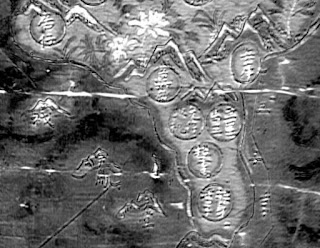The meeting was kind of entertaining today. We read like four abstracts and reviewed them. Mine and Paige's won't be ready until probably Thursday or Friday. After that we worked on the presentation again. This time I added little explanations that were unnecessary but it's whatever. We also added more SAM results to the thing and Paige is building this nifty map so I'm pretty happy looking at that. I'm working on comparing the red pigments across the map, using the chrysanthemums in Japan as reference. Dave won't be here tomorrow so we're gonna have a fantastic time figuring things out. I literally cannot wait. We'll likely add more slides of red and blue pigment and see where that goes.
I don't have an RGB images of Japan but here's a SAM result so you have some kinda of idea what I'm doing.
I don't have an RGB images of Japan but here's a SAM result so you have some kinda of idea what I'm doing.

Comments
Post a Comment